 Winter can be a challenging month for chicken keepers. Each day we must brave the cold temperatures to care for our flocks. Paths must be shoveled to the coop, the hoses freeze so all water must be brought out in buckets, and it can be a challenge to keep the water we haul our from turning to ice in the waterers. It’s a true test of love and will make-or-break most chicken keepers.
Winter can be a challenging month for chicken keepers. Each day we must brave the cold temperatures to care for our flocks. Paths must be shoveled to the coop, the hoses freeze so all water must be brought out in buckets, and it can be a challenge to keep the water we haul our from turning to ice in the waterers. It’s a true test of love and will make-or-break most chicken keepers.
Another thing to contend with is the lack of variety in our flock’s feed. Our chickens free range in the warmer months and in the winter, their selection is pretty much narrowed to what ever we put in their feed bin.
I’ve noticed that in the winter, our hens egg production comes to a screeching halt after the autumn molt. And if we do get an egg, the yolk isn’t that vibrant orange that we get when the girls are rustling around in the grass, eating bugs and weeds, and spending time in the sunshine.
During the winter, I make a point of adding extra kitchen scraps to the feed choices in the coop. We often switch to a higher protein feed, and supplement with meal worm treats and calcium supplements.
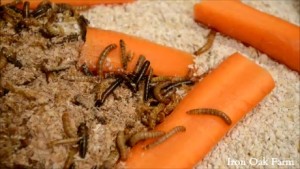 In fact, Zach and I set up our first Meal Worm Breeding System about a week ago. I will be keeping you posted in future blogs.
In fact, Zach and I set up our first Meal Worm Breeding System about a week ago. I will be keeping you posted in future blogs.
This year, we decided to try a new product to give our girls a boost during the harshest months.
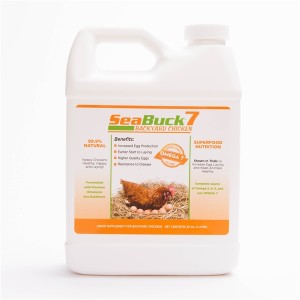 Sea Buck 7 contacted me and asked if I would be willing to try their Seabuck 7 Backyard Chicken supplement for 30 days and report to the Community Chickens readers what we found.
Sea Buck 7 contacted me and asked if I would be willing to try their Seabuck 7 Backyard Chicken supplement for 30 days and report to the Community Chickens readers what we found.
I had heard of the nutritional qualities of Sea buckthorn Berries for humans, but never knew that the benefits translated to animals as well.
The product is an orange liquid and is to be applied top dress to the feed once a day.
With the first few applications I noticed that our mixed flock of chickens, turkeys, guineas, ducks and geese would eat the Seabuck 7 feed first. They love it!
After two weeks we noticed that any stragglers from late autumn molt had grown back their plumage completely and quicker than usual. We also noticed that the turkey heads, the duck’s beaks and the chicken’s wattles were more vibrant in color. I feel like everyone gets a little grey and pasty in the winter months.
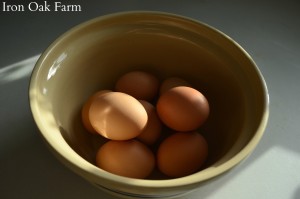 After 4 weeks of using the product we are collecting eggs on a daily basis!!!
After 4 weeks of using the product we are collecting eggs on a daily basis!!!
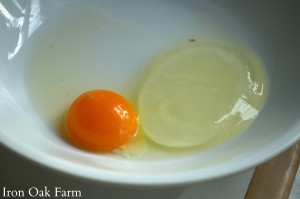 And check out these yolks! They look like spring time eggs!
And check out these yolks! They look like spring time eggs!
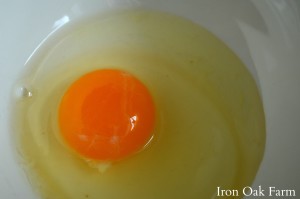 I’m so happy with the product that we are going to start feeding it to our goats as well. I’m anxiously awaiting a gallon of the supplement in the mail.
I’m so happy with the product that we are going to start feeding it to our goats as well. I’m anxiously awaiting a gallon of the supplement in the mail.
SeaBuck 7 sent me some lab results showing the difference between a regular grocery store egg and a backyard chicken egg that had been fed the Sea buck 7 supplement. The results are amazing!
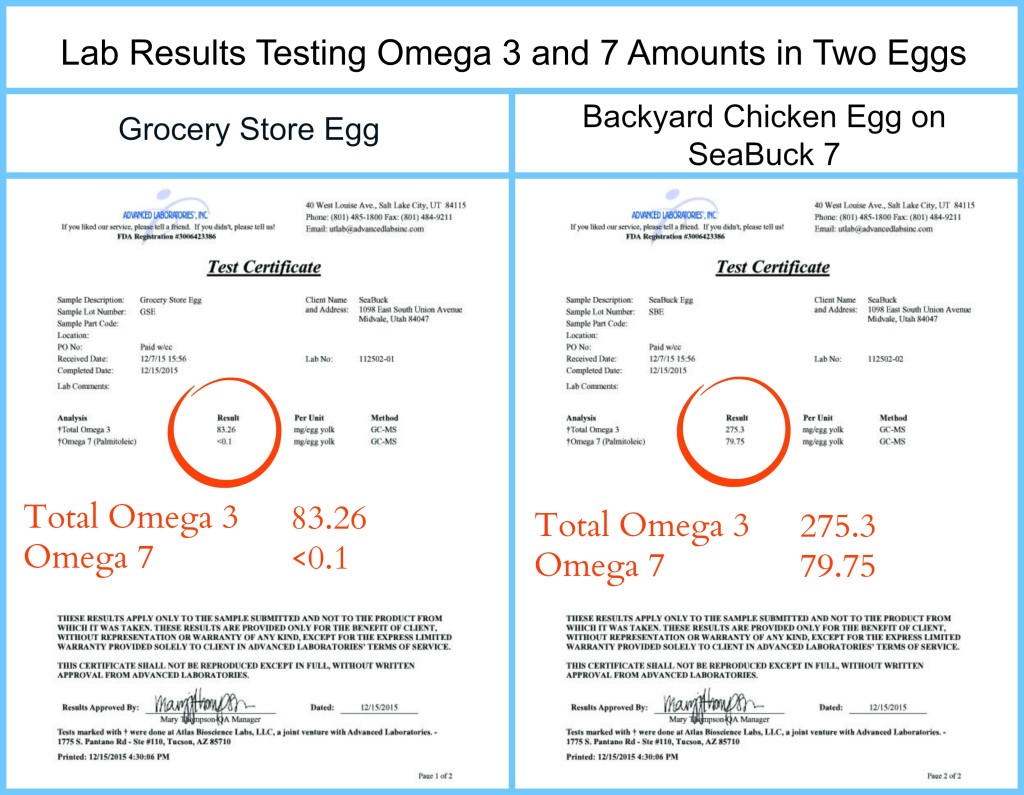
Want to give SeaBuck 7 a try with your flock? You can save 15% from now until May 30th, 2016. The coupon is unlimited – meaning people can use it as many times as they like until it expires on May 30. Shipping is always free on orders of 2 or more bottles.
Coupon code for 15% off: IRONOAK













8 Comments
Please let me know where I can find one one who carries this product.Thank you Dorothy
Please let me know where I can find one one who carries this product.Thank you Dorothy
I started using Seabuck7 a couple of months ago because my hens last yr slowed down to 6 eggs a day (I have 38 hens) and thought I’d try this. This yr I’ve been getting triple the eggs & they seems healthier this winter. Now mind you our Winter this yr has not been as bad a previous yrs but I do think Sabuck7 has helped tremendously.
I just received my order of the sea buck 7…how do you feed it to your flock and ensure everyone gets some? I have three coops with 8, 9, and 10 chickens in each. Pecking order being what it is, how do I make sure everyone gets some since it recommends 1/2 oz for 8 birds??
I am anxious to try SeaBuck7, my eggs have about stopped, winter and short day light hours. I have 7 hens and 1 rooster, I try and keep them healthy food and fresh water. They are kept in a fenced in area with a house roof over half of it. Pretty classy for my chickens. Hope this will solve the problems of no eggs.
I have the exact same problem. 33+ ladies and not one egg until about March. Then I can’t give them away fast enough.
That’s wonderful but I want to know what’s in a product. I read that chickens in commercial egg farms are fed dyes to get a certain color in the yokes. Also how expensive is it? Further you can up your winter production in a number of alternative ways. You can sprout oats or other grains and feed the greens to the hens. If you dress all your year old hens in the fall about the time the young pullets start to lay you will always have consistent winter eggs. The old hens make great canned or frozen chicken and it will be a quality you can’t buy. It’s a very efficient way to have both eggs and meat.
That’s amazing to learn that sea buckthorn is as good for animals as it is for us humans. I also did not know there was an omega 7, so I learned a lot from your post today. Thanks for sharing it.